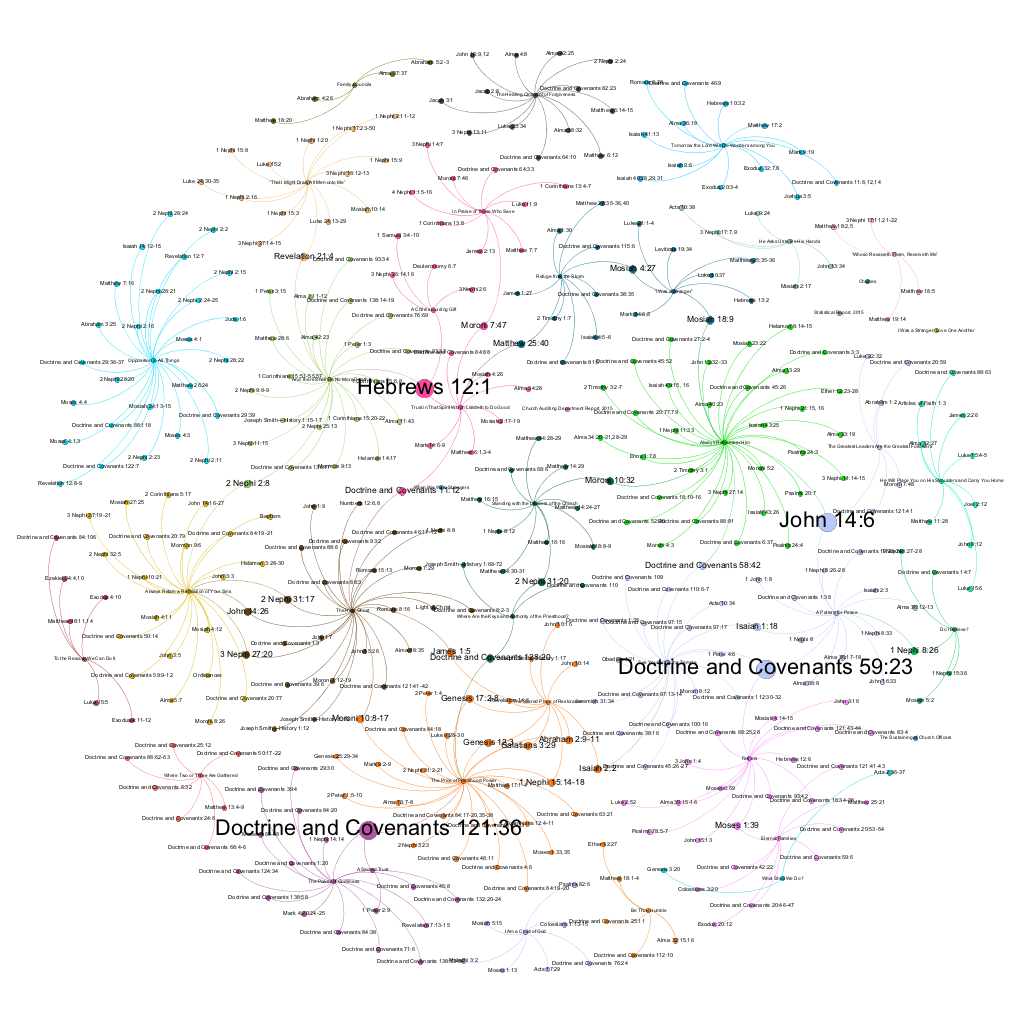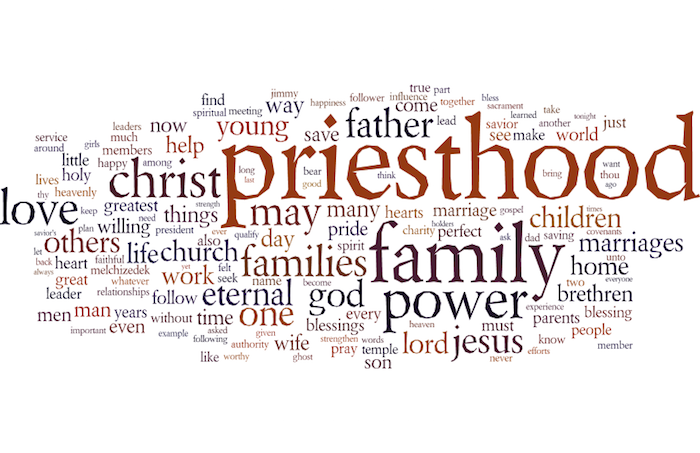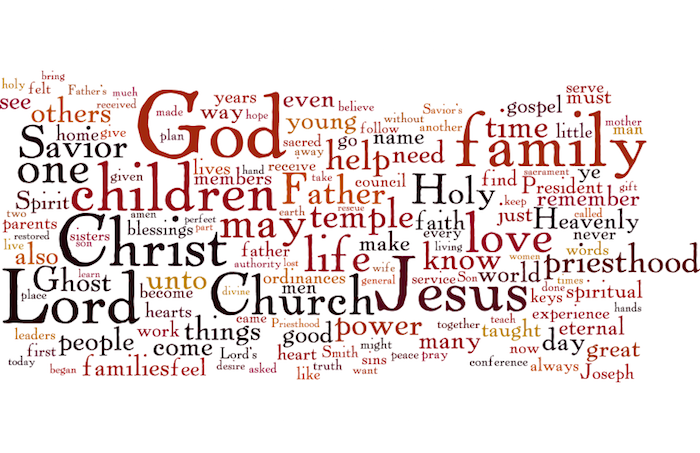Teaching Children Hermeneutics
## **her·me·neu·tics:** *(noun)* the branch of knowledge that deals with interpretation, especially of the...
Being a software and data engineer, I’ve found it fruitful to use my skills in my exploration of faith. A while back, I wrote a program which can be pointed at a website to crawl it so its links and content can be visualized. This can be pointed at the LDS General Conference report which is held twice a year and posted online shortly afterwards. Here are some insights from that exercise.
This is a network created by linking conference talks to the scriptures they cited.

(to zoom in & pan around, use this SVG here and use your browser’s zooming controls)
The size of the nodes in the network are based on the number of incoming links they have. Since I’m just following scripture references from talks, the nodes with the largest size represent the scriptures most frequently cited. The hubs which have many links coming out of them are the talks given in the conference.
There are four scriptures which are cited the most. These are scriptures which are cited three times from the different talks.
Doctrine & Covenants 59:23:
But learn that he who doeth the works of righteousness shall receive his reward, even peace in this world, and eternal life in the world to come.
Hebrews 12:1:
Wherefore seeing we also are compassed about with so great a cloud of witnesses, let us lay aside every weight, and the sin which doth so easily beset us, and let us run with patience the race that is set before us,
John 14:6:
Jesus saith unto him, I am the way, the truth, and the life: no man cometh unto the Father, but by me.
Doctrine & Covenants 121:36:
That the rights of the priesthood are inseparably connected with the powers of heaven, and that the powers of heaven cannot be controlled nor handled only upon the principles of righteousness.
The network and most cited scriptures are interesting visualizations of the conference, but they don’t tell you a whole lot about the content. One way to do that is to create word clouds of the most frequently said terms. I’ve created three clouds here: 1) the general women’s session, 2) the general priesthood session, & 3) all sessions together.



There are many take-aways that could be made from these. It’s important to remember that word clouds and frequently cited scriptures are just two limited tools for understanding conference. To really understand the messages of this conference you’ll have to watch it, listen to, or read it.
What insights you see from this analysis? And what insights do you gain when you read or hear the words in conference?
